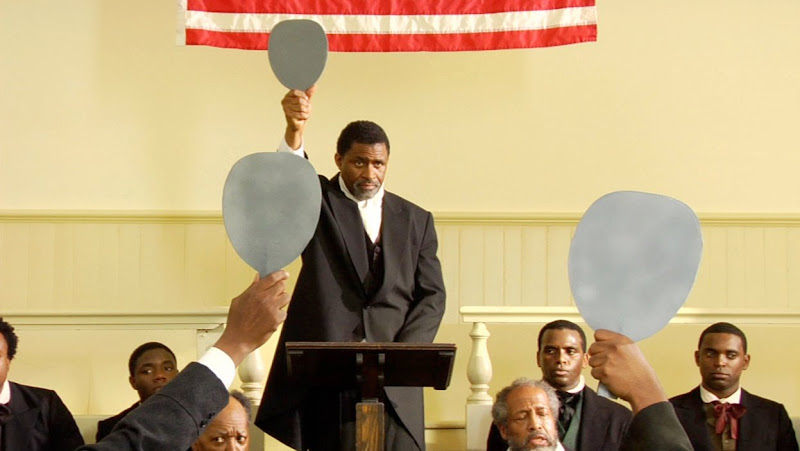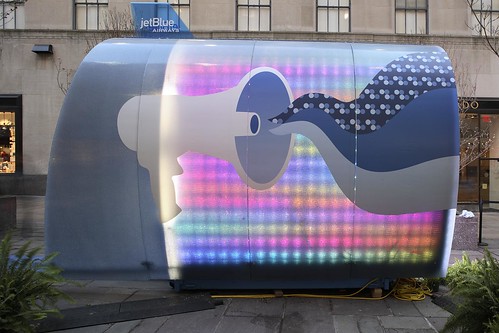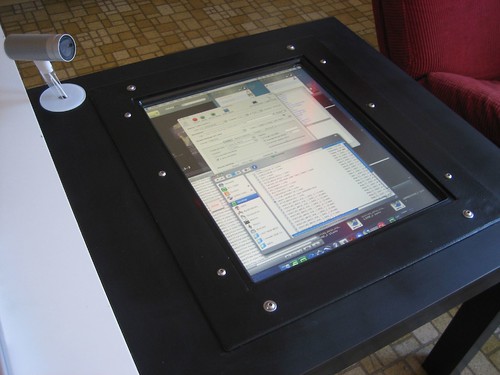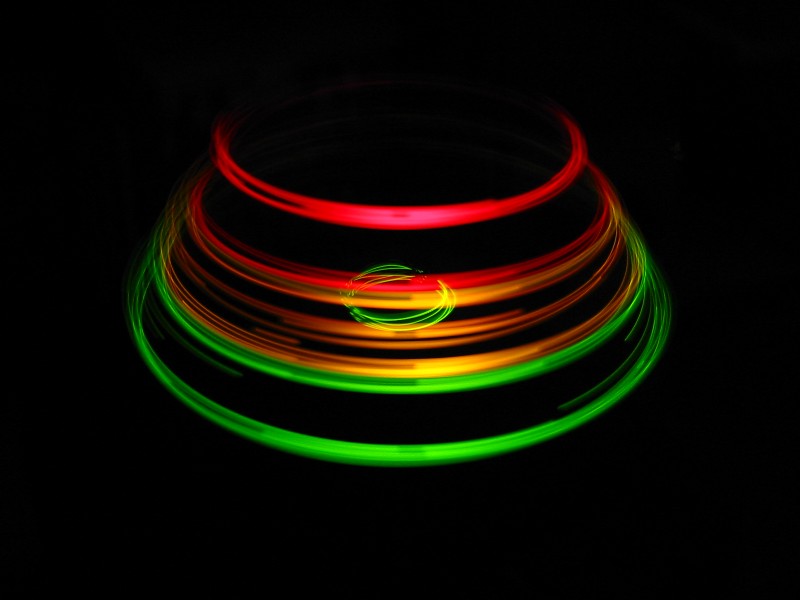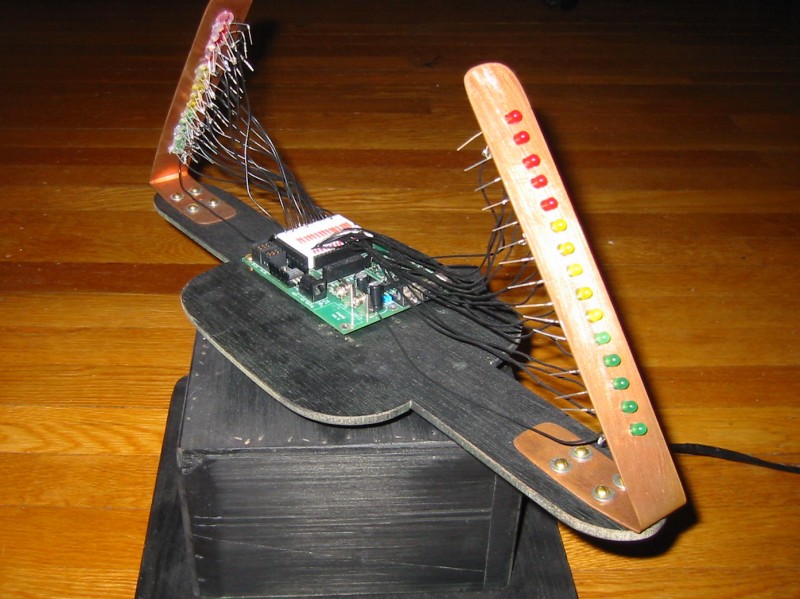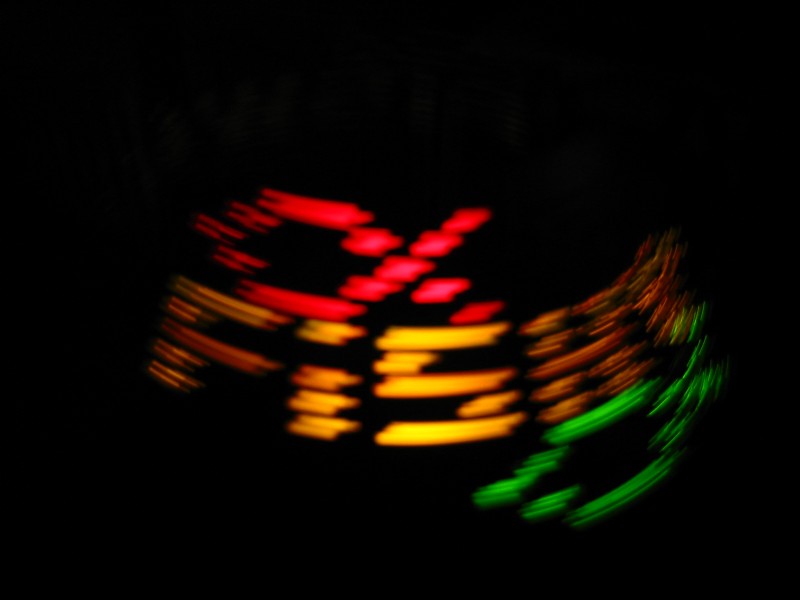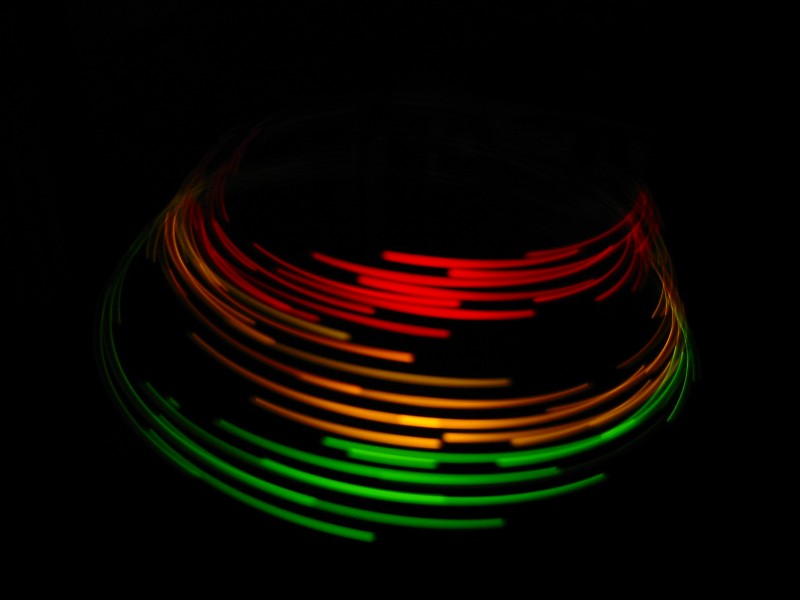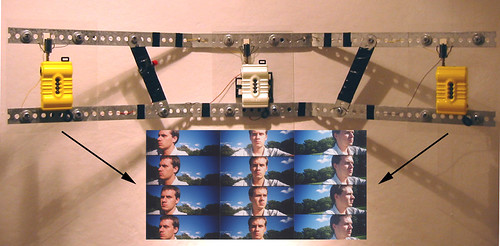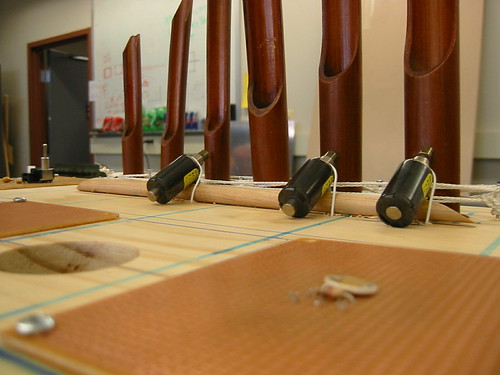
2002 – wood, photoresistors, solenoids, bamboo
The Sensetrument is a percussion instrument that is played without being touched. When a hand passes over the one of the photoresistors, a solenoid strikes one of the bamboo pieces, producing a sound. There is also another solenoid on a variable timer to create a constant background beat.
It is a somewhat crude implementation of a cooler project that never happened. The original concept was to use IR sensors, so that ambient light was not required. At the time, every IR sensor I could find would simply not work right. (I’d breadboard it together and it would work, and then I’d actually assemble the final circuit, and it wouldn’t.) Infuriating, and cause for serious delay in the project timeline. The time spent fiddling with IR sensors before the last minute decision to give up and use photoresistors prevented a much needed coat of paint, as well as some more interesting parts of the project.
Ideally, it would be all black, and employ IR sender/recievers, allowing it to work in the dark. Each sensing panel would be wired to some sort of synthesizer, such as a ripped apart Casio keyboard, and when each note plays, LED lights would illuminate the sensing panel and the hand above it.
Alas, as it turned out, the sensetrument was a photoresistor-mediated percussion instrument. It has since been dismantled for parts, but was fun while it lasted. I’ve since found some wonderful (reliable) IR sender/recievers, as well as some IR rangers, so hopefully one of these days I’ll finally assemble what I set out to years ago in robotics class.
…Or maybe I’ll just buy a Theremin.
